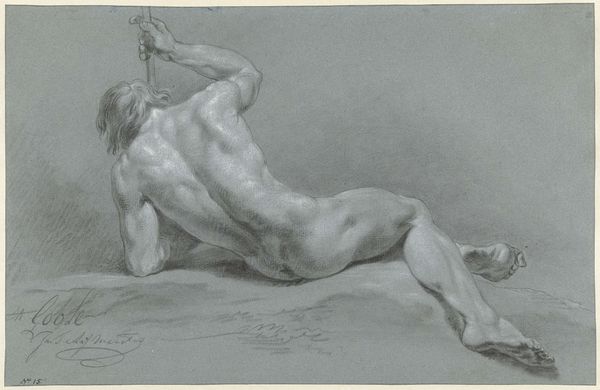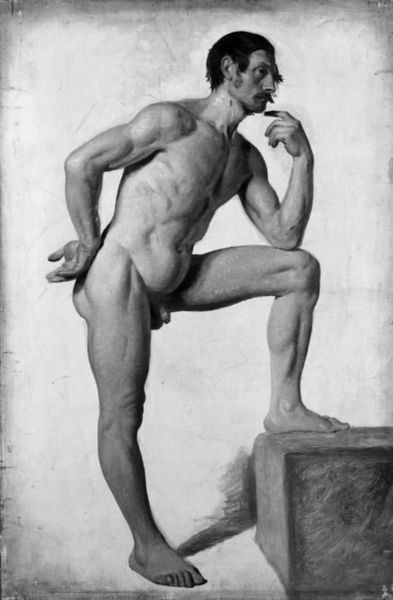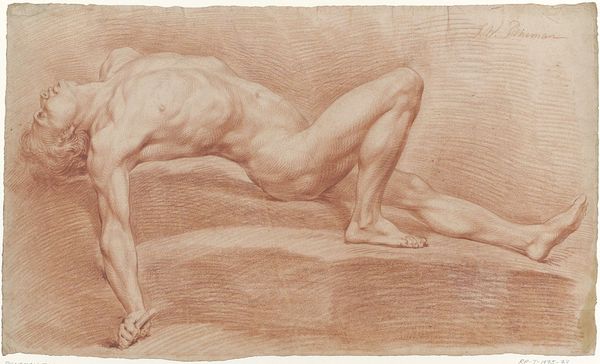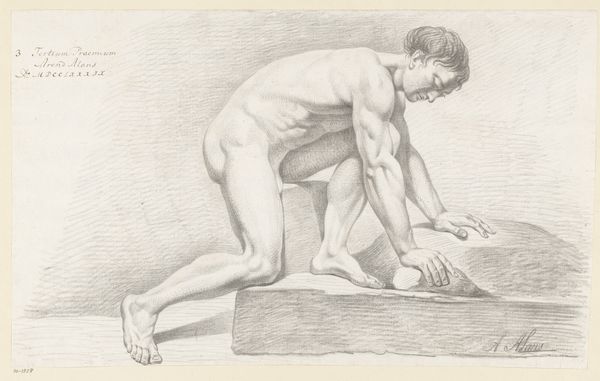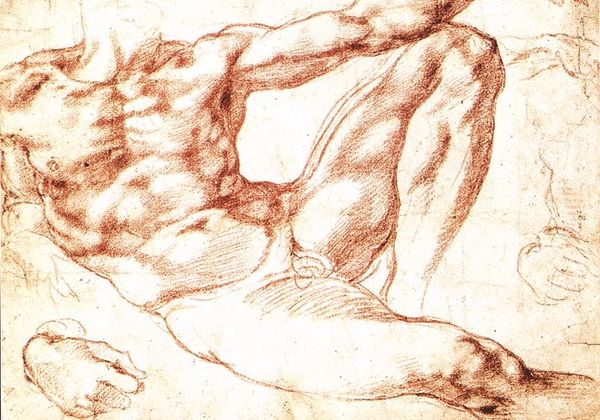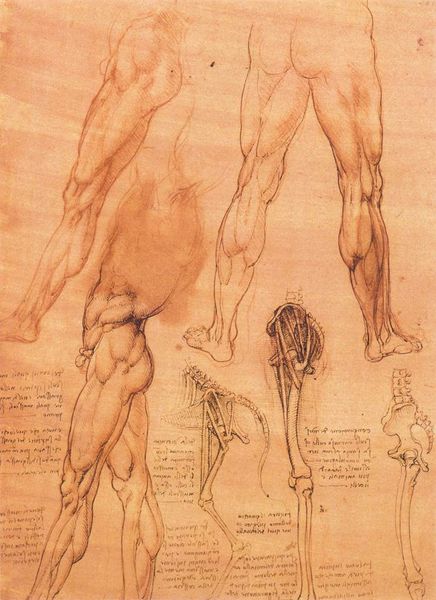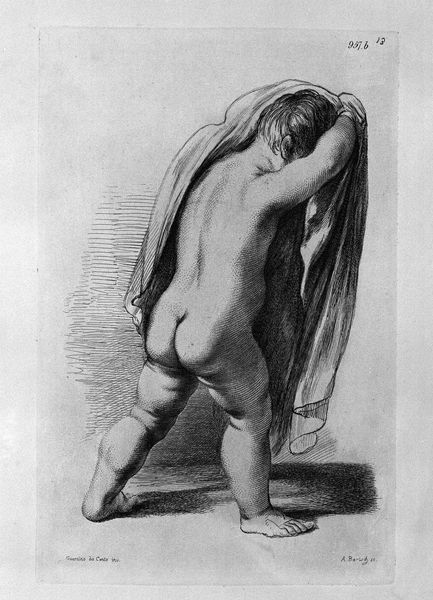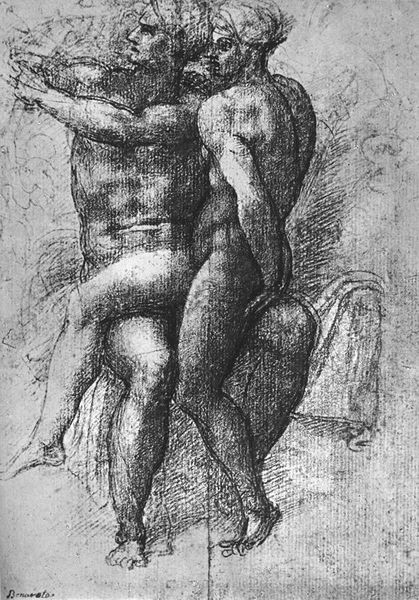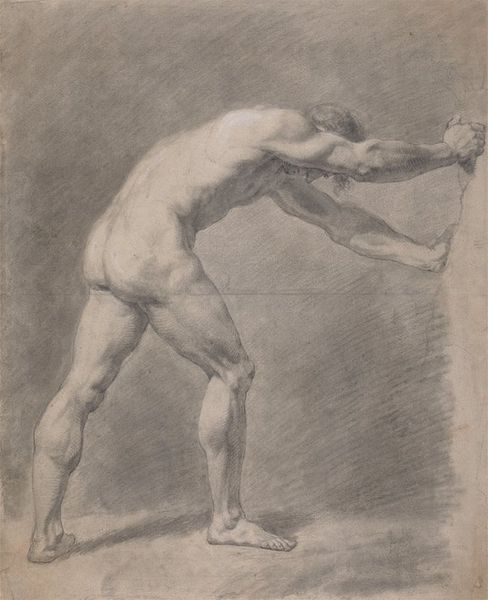
drawing, dry-media, charcoal
#
drawing
#
charcoal drawing
#
form
#
dry-media
#
sketch
#
romanticism
#
line
#
charcoal
#
academic-art
#
nude
#
realism
Copyright: Public domain
Editor: We are looking at "Standing sitter with a stick. Sitter on a rock," a charcoal drawing from 1801 by Orest Kiprensky. It’s quite striking with the figures' musculature sharply defined. I'm intrigued by what looks like a dramatic tension or a kind of restrained power. How do you interpret this work? Curator: Notice how the figure isn't simply presented; rather, Kiprensky uses contrasting viewpoints to show the subject in multiple aspects. Think of these as two studies of the same concept – virility, perhaps, or maybe strength observed. Does the object in the standing figure's hand appear symbolic to you? Editor: It does! It almost looks like a knife...or a very short stick. It definitely introduces an element of potential action or latent aggression, contrasting with the passivity of the seated figure. Is this symbolic? Curator: The blade connects back to earlier, classical notions of masculine identity, but reinterpreted. We see it in the Romantic style of the time, yes? But Kiprensky, trained in the academic style, is merging those heroic forms and ideas with something more personal. Is he depicting strength, or vulnerability? Editor: The ambiguity is fascinating! It challenges a simple interpretation of heroism or masculine power. I hadn't considered the blend of styles, either – it adds another layer to understanding the work. Curator: Indeed. It pulls from established notions of what it means to be "strong," then uses the Romantic style to delve inward. These weren't intended just as studies of form; Kiprensky seems to examine identity itself. What do you make of that contrast between internal feeling and outward representation now? Editor: It makes me reconsider my initial impression! I see the seated figure as not passive, but contemplative; a counterpart to the figure ready for action. There is something profoundly unsettling – in a productive way – about the juxtaposition. Curator: And sometimes the greatest meaning comes from what unsettles us, from questioning our immediate responses.
Comments
No comments
Be the first to comment and join the conversation on the ultimate creative platform.




